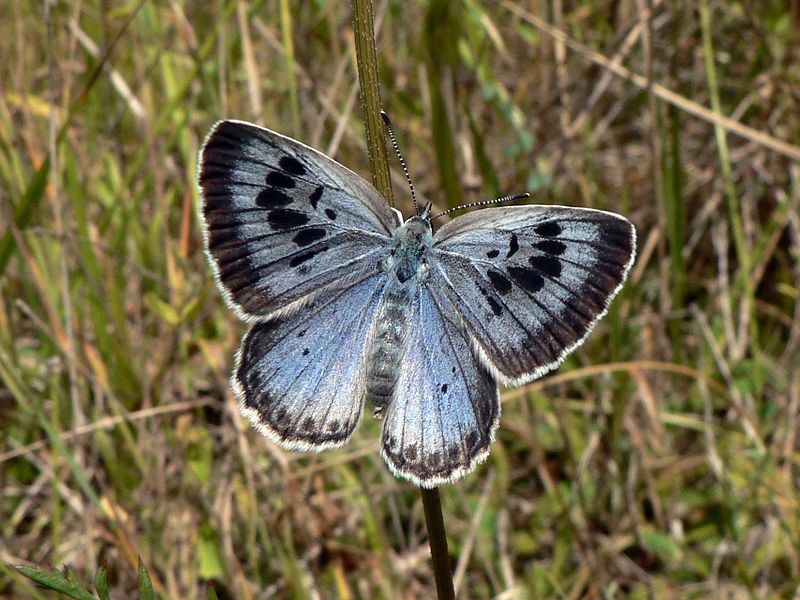In the United Kingdom, the subject of butterfly protection is very topical. Nationwide butterfly counts, such as the Big Butterfly Count, are organised. In addition, events like Moth Nights are held. In Estonia, butterfly protection is not as relevant and it is not being attended to in such an extensive manner. Questions related to butterflies are mainly the field of hobby entomologists and butterfly researchers at universities, as well as scientists and students. There is a clear reason, why this is so. Firstly, there is nothing wrong with the butterflies of Estonia; our nature and people have managed to preserve most of our rare butterflies either by chance or conscious effort. In order to put the previous text into context, let us complement it with numbers.
In Estonia, you can find about 900 large butterfly species, over 1,000 small butterfly species and more than 50 kinds of dragonflies.
Only around 60 species of butterfly are seen regularly in the UK, but there are around 2,500 species of moths. Over the past 20 to 40 years, more than 20,000 volunteers have collected data which confirmed that the populations of 71% of butterfly species have diminished in the past 20 years. With respect to birds and plants, the figures were 56% and 28% respectively. The number of butterflies has diminished throughout the UK, not in a single specific region. Therefore, it is understandable why events like the Big Butterfly Count and Moth Night are organised.
There are butterfly species in danger of extinction in Estonia as well, such as the Large Blue (Maculinea arion).
At the same time, we have many insect species which are rare elsewhere in Europe, such as the Clouded Apollo (Parnassius mnemosyne), Moorland Clouded Yellow (Colias palaeno), Large Copper (Lucaena dispar), Siberian Winter Damsel (Sympecma paedisca) and Lilypad Whiteface (Leucorrhinia caudalis).
Some species, like the Old World Swallowtail (Papilio machaon) can be easily found in Estonia, but are very rare in the UK.
After the last ice age, water melting from the glaciers caused the sea level to rise to such an extent that the majority of the eastern part of Great Britain was waterlogged. This way, an area of 40,000 km2 of bogs and wetlands developed, where the Old World Swallowtail and Milk Parsley (Peucedanum palustre) could co-evolve peacefully for thousands of years.
In the 18th century, however, extensive drainage projects using wind power and steam-powered pumps began to be conducted. The wetlands started to dry slowly and irrevocably.
Together with the irrigation of wetlands, Milk Parsley began to disappear, as it grows well only in wet areas. As a result, the chances for survival of the Old World Swallowtail diminished. Its habitat became so restricted that, in the end, the species survived only in two areas: Wicken Fen, situated north of Cambridge, and areas in the vicinity of Norfolk Broads.
At the beginning of 1950s, the Old World Swallowtail disappeared from Wicken Fen. The first attempts to repopulate it failed, but researchers inquired into the reasons behind its vanishing and have managed to increase the public’s interest in this magnificent species in the process of attempting to save it.
A period of persistent planting was initiated. In 1975, seeds of Milk Parsley, a plant in the Apiaceae family, were sown to the wetlands of Wicken Fen, England’s oldest national nature reserve.
In order for the meadows of wetlands to persist, they have to be mown regularly. Although wetlands are in protected areas, they were mown too early, whereas the seeds of Milk Parsley could not ripen. Thus, the plant became gradually more rare. At the same time, 25 – 30% of the Old World Swallowtail pupae perished in the unduly early mowing, which did not facilitate the attempts to increase its population at all.
Wicken Fen is a drying peatland, the peat layers of which are situated higher than the surrounding regions. In order to create conditions favourable to the Old World Swallowtail, extreme measures need to be taken: a necessary amount of water needs to be pumped there or the area must be lowered to groundwater level by stripping the peat. Without these changes, the repopulation of Old World Swallowtails to these areas cannot be successful.
The described situation is a good example of the complexity of interrelations in natural ecosystems and a proof to the fact that the maintenance of nature reserves, as well as the active protection of endangered species must always be accompanied with a good knowledge of ecology.
We have a lesson to learn from this, since the restoration of butterfly habitats takes time, wherefore it would be better to maintain what we have and not have to start dealing with re-establishing butterfly species and re-building their habitats in the future.
Perhaps we should organise an event similar to the Big Butterfly Count in Estonia?










Great article, I enjoyed reading it.
Wildlife photography is my hobby. I love visiting famous places for wildlife. But I never knew that Estonia is a famous place for butterflies. Small species photography is much harder than big once.
Information about Big Butterfly Count is here
http://www.bigbutterflycount.org/about